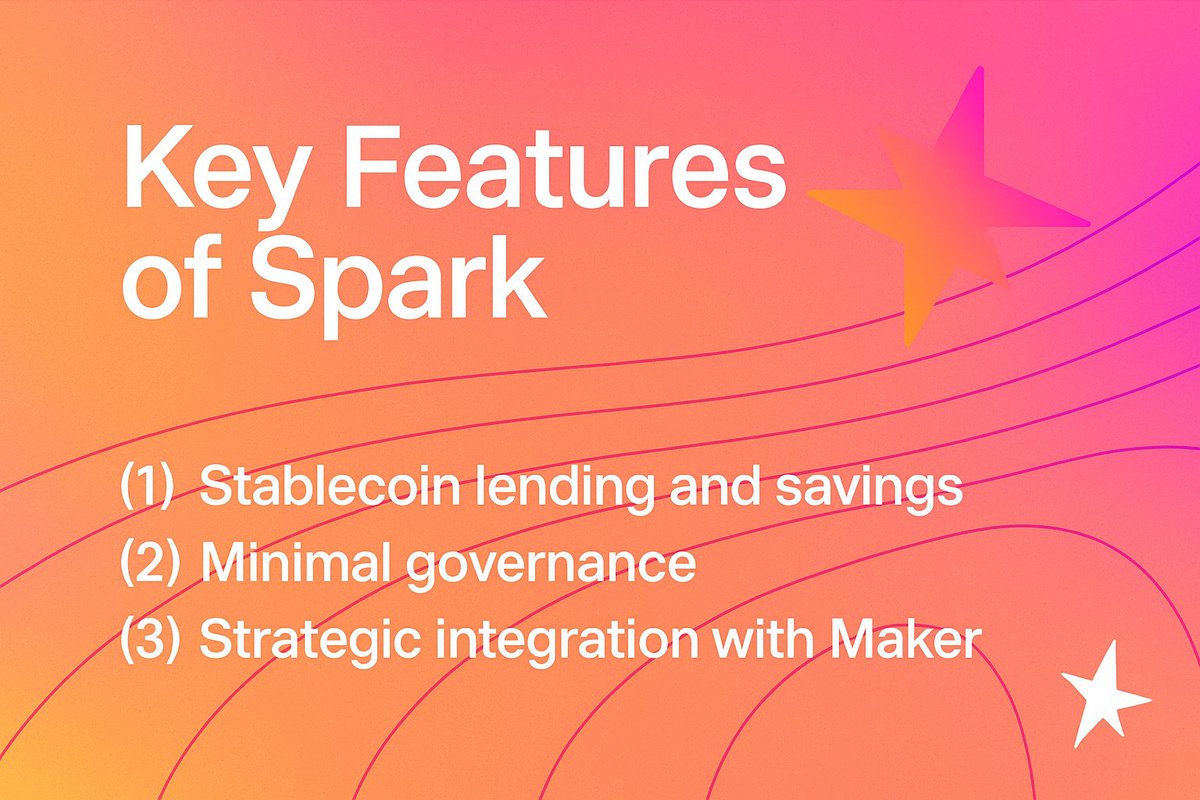[The core of Spark's design is to make "interest" natively composable]
In Spark's design, borrowing is just the appearance, and interest is the core. The question Spark wants to solve is not "how much can I borrow?" but "how do I build a sustainable, composable, and callable interest rate engine on-chain?" ”
1. Spark is not a platform, but an on-chain interest system
Spark's product modules look simple, but in fact they are designed with three layers:
(1) Savings module: Users can deposit USDC or DAI into the savings pool and get an annualized interest rate of about 4.5%, and the interest comes from DSR + protocol scheduling.
(2) Lending module: Support staking of blue-chip assets such as ETH, stETH, cbETH, rETH, wstETH, etc., and lend Spark's own stablecoin USDS.
(3) Spark Liquidity Layer: The protocol will automatically deploy part of the liquidity to external protocols such as Aave and Velodrome to improve the utilization rate of funds and compound returns.
These three parts work together to form an underlying system of "on-chain spread bank": the pool can generate interest margins, and Spark autonomously dispatches this part of the value, and determines the distribution path through governance.
Second, interest becomes a composable module, which is the core innovation of Spark
In traditional DeFi protocols, interest is a passive by-product that is the result of matching supply and demand in the market. In Spark, interest is the core asset that can be designed, encapsulated, scheduled, and redistributed:
(1) Income encapsulation: Users obtain income assets such as sUSDC and sDAI, without additional pledge or conversion, and the income is automatically accumulated.
(2) Module scheduling: Spark DAO can adjust interest rate sources (such as DSR), scheduling strategies, and risk exposure.
(3) Compound interest in the system: Users can repatriate funds by "lending USDS → and depositing them into the savings pool" to enhance personal income and system stickiness.
(4) Governance binding: SPK tokens can be used to participate in the governance and revenue sharing of these funding paths in the future.
In other words, Spark turns "interest" from a by-product of DeFi into a native unit of protocol design.
3. Summary: The essence of Spark is a set of interest programming systems
What Spark wants to build is not a "super lending platform" on a certain chain, but:
(1) a native interest rate generation engine;
(2) a modular and combinable set of revenue tools;
(3) A system that makes interest circulable, shareable, and governed.
Its product structure is not to make TVL rankings, but to build a "on-chain bank-type" long-term financial order - this is what sets Spark apart.
@sparkdotfi @cookiedotfun #Spark #SparkFinance #COOKIE
Show original
55
48.61K
The content on this page is provided by third parties. Unless otherwise stated, OKX is not the author of the cited article(s) and does not claim any copyright in the materials. The content is provided for informational purposes only and does not represent the views of OKX. It is not intended to be an endorsement of any kind and should not be considered investment advice or a solicitation to buy or sell digital assets. To the extent generative AI is utilized to provide summaries or other information, such AI generated content may be inaccurate or inconsistent. Please read the linked article for more details and information. OKX is not responsible for content hosted on third party sites. Digital asset holdings, including stablecoins and NFTs, involve a high degree of risk and can fluctuate greatly. You should carefully consider whether trading or holding digital assets is suitable for you in light of your financial condition.

